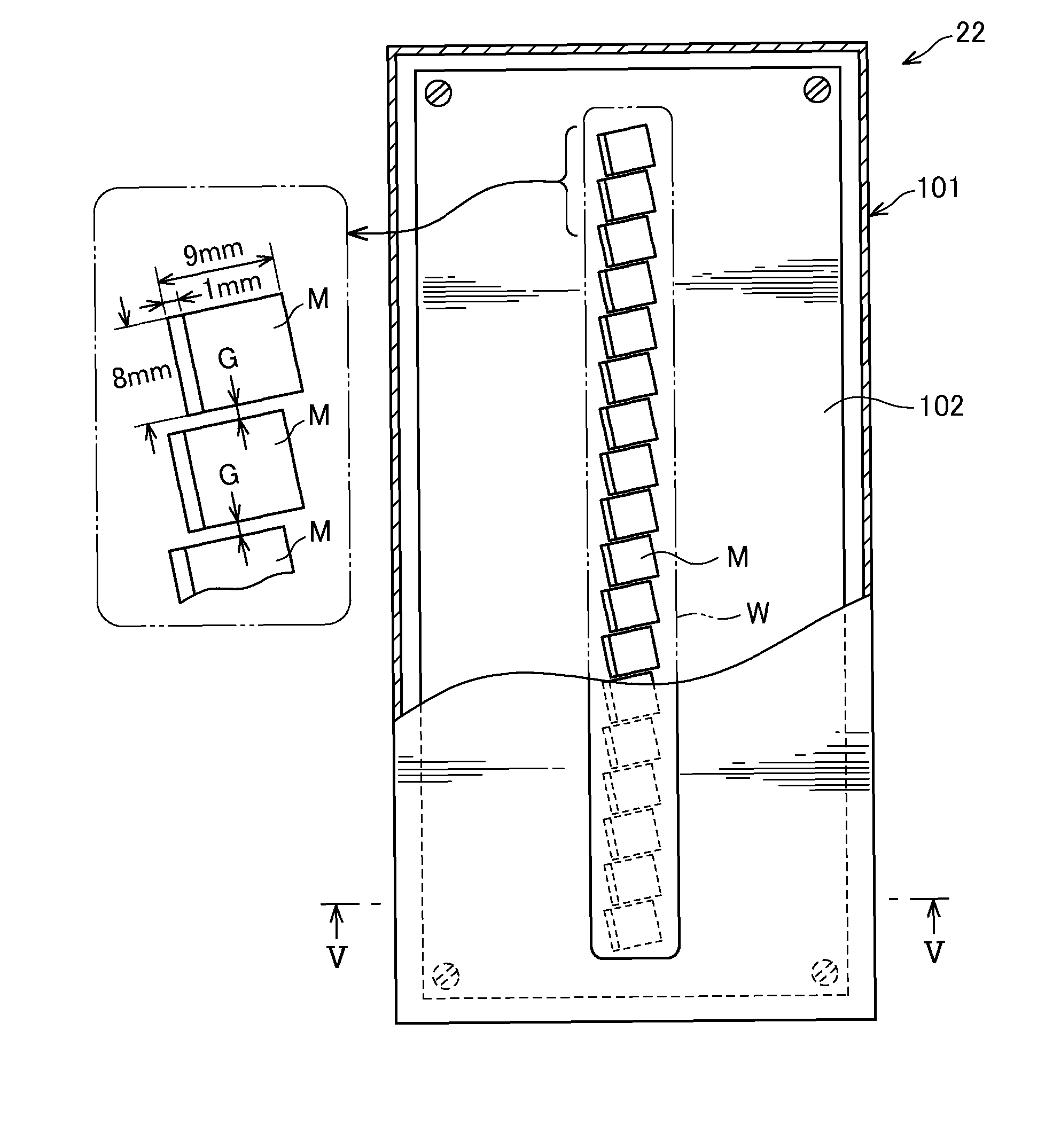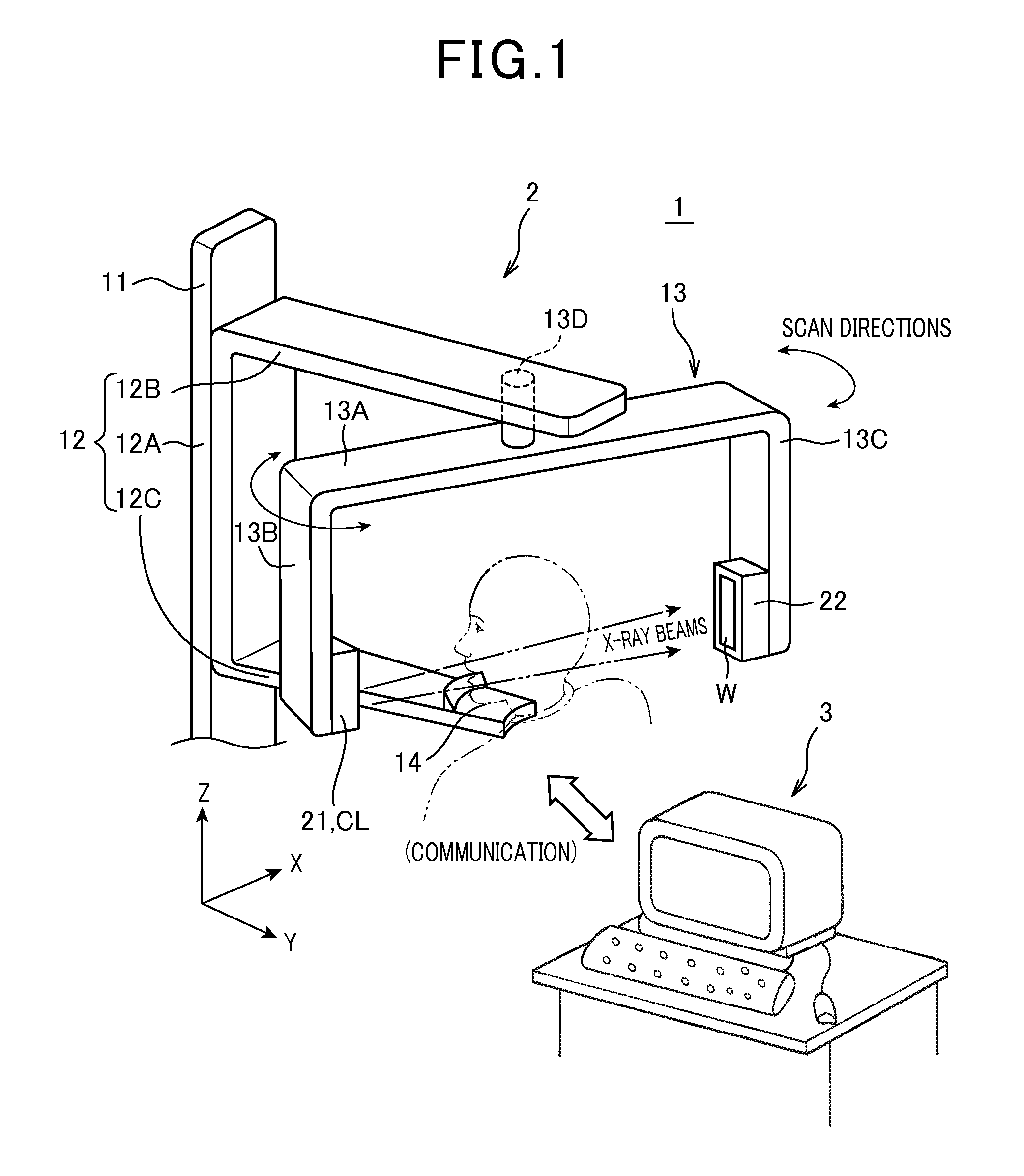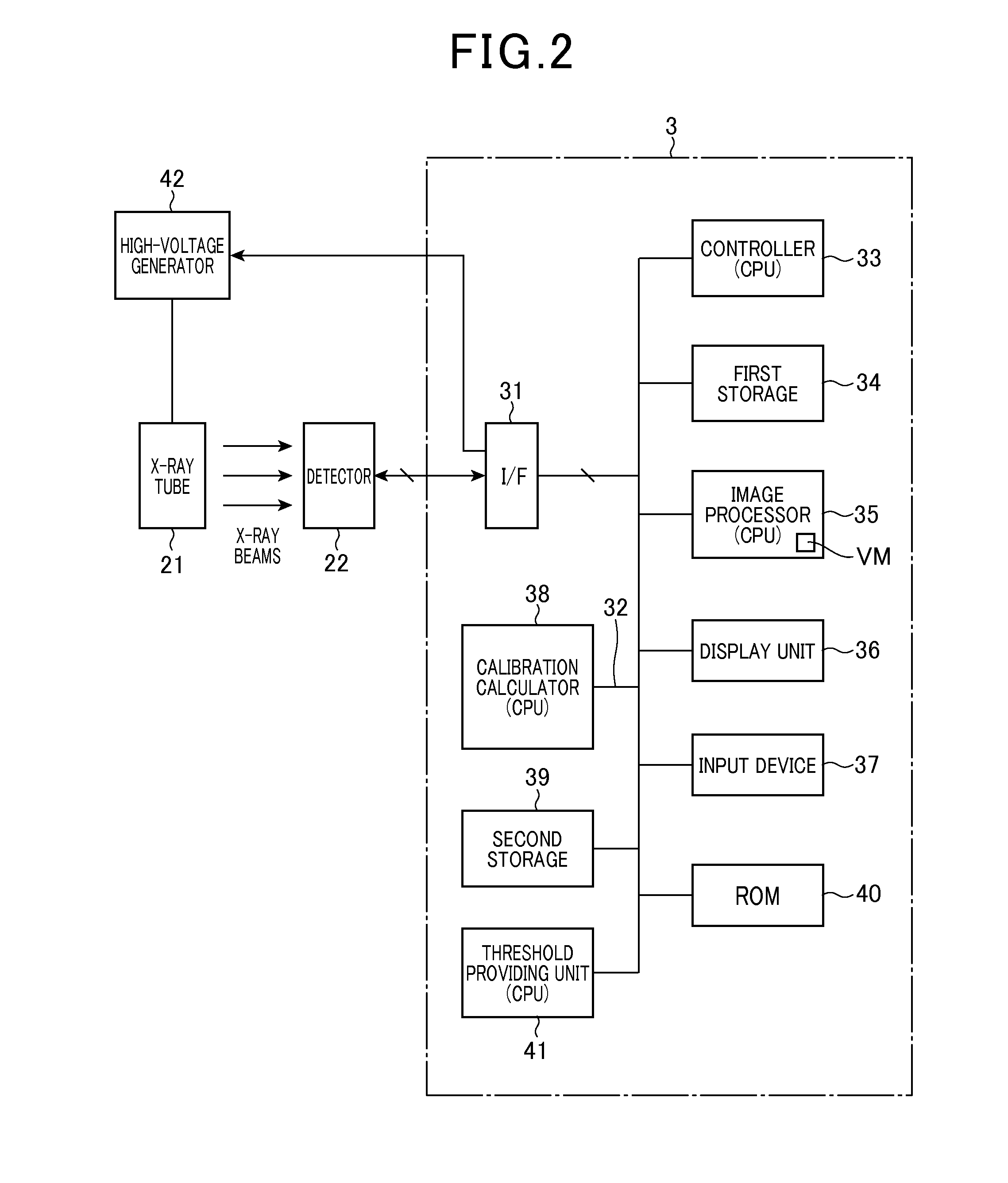Radiation detector, and radiation imaging apparatus provided with detector
a radiation detector and detector technology, applied in the direction of instruments, patient positioning for diagnostics, applications, etc., can solve the problems of performance and production costs, unnecessary x-ray exposure of patients, and partial areas useless in data acquisition, so as to reduce the influence of dead zones of detectors on image quality, suppress radiation exposure, and reduce the effect of dead zones of detectors
- Summary
- Abstract
- Description
- Claims
- Application Information
AI Technical Summary
Benefits of technology
Problems solved by technology
Method used
Image
Examples
first embodiment
[0055]Referring to FIGS. 1-17, a first embodiment of the radiation detector according to the present invention will now be described.
[0056]In the present embodiment, the radiation detector according to the present invention is an X-ray detector adopted by a dental X-ray panoramic imaging apparatus (hereinafter simply referred to as a panoramic imaging apparatus). Of course, as described later, this radiation detector can be mounted in a medical X-ray CT (Computed Tomography) scanner and an industrial X-ray CT apparatus. The X-ray detector in the present embodiment is exemplified as a photon counting type of X-ray detector. However, the radiation detector according to the present invention will not always be limited to the photon counting type, but may be applied to an integration type of detector which has the capability of detecting an intensity of incoming X-rays as an integrated amount calculated every designated period.
[0057]FIG. 1 outlines the panoramic imaging apparatus 1. Thi...
second embodiment
[0164]Referring to FIGS. 19 to 22, hereinafter is described a second embodiment of the radiation detector related to the present invention. In the present embodiment, the components identical with or similar to those in the first embodiment are given the same reference numerals for the sake of omitting or simplifying the description.
[0165]The present embodiment relates to an example in which the present invention is applied to an implemented X-ray CT (computed tomography) scanner. Since the configuration of the X-ray CT scanner is known, description is omitted. An X-ray detector 80 shown in FIG. 19 is applied to the X-ray CT scanner. Similar to the detector 22 described in the first embodiment, the detector 80 also includes a box-like housing 81 with a motherboard 82 being arranged inside. The housing 81 has an upper surface in which a rectangular X-ray incidence window W is formed. The motherboard 82 located right beneath the incidence window W has an upper surface in which a plura...
PUM
 Login to View More
Login to View More Abstract
Description
Claims
Application Information
 Login to View More
Login to View More - R&D
- Intellectual Property
- Life Sciences
- Materials
- Tech Scout
- Unparalleled Data Quality
- Higher Quality Content
- 60% Fewer Hallucinations
Browse by: Latest US Patents, China's latest patents, Technical Efficacy Thesaurus, Application Domain, Technology Topic, Popular Technical Reports.
© 2025 PatSnap. All rights reserved.Legal|Privacy policy|Modern Slavery Act Transparency Statement|Sitemap|About US| Contact US: help@patsnap.com



